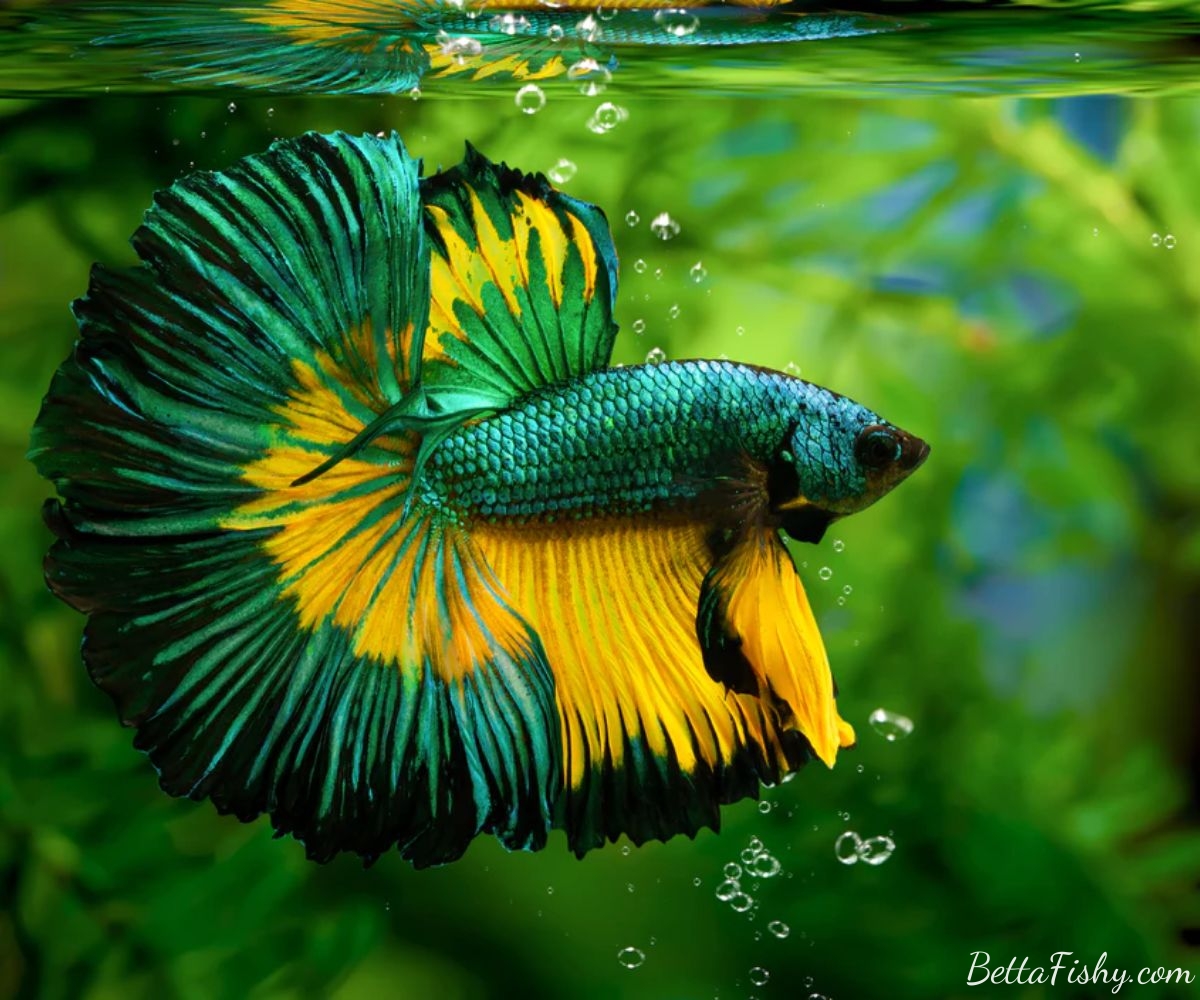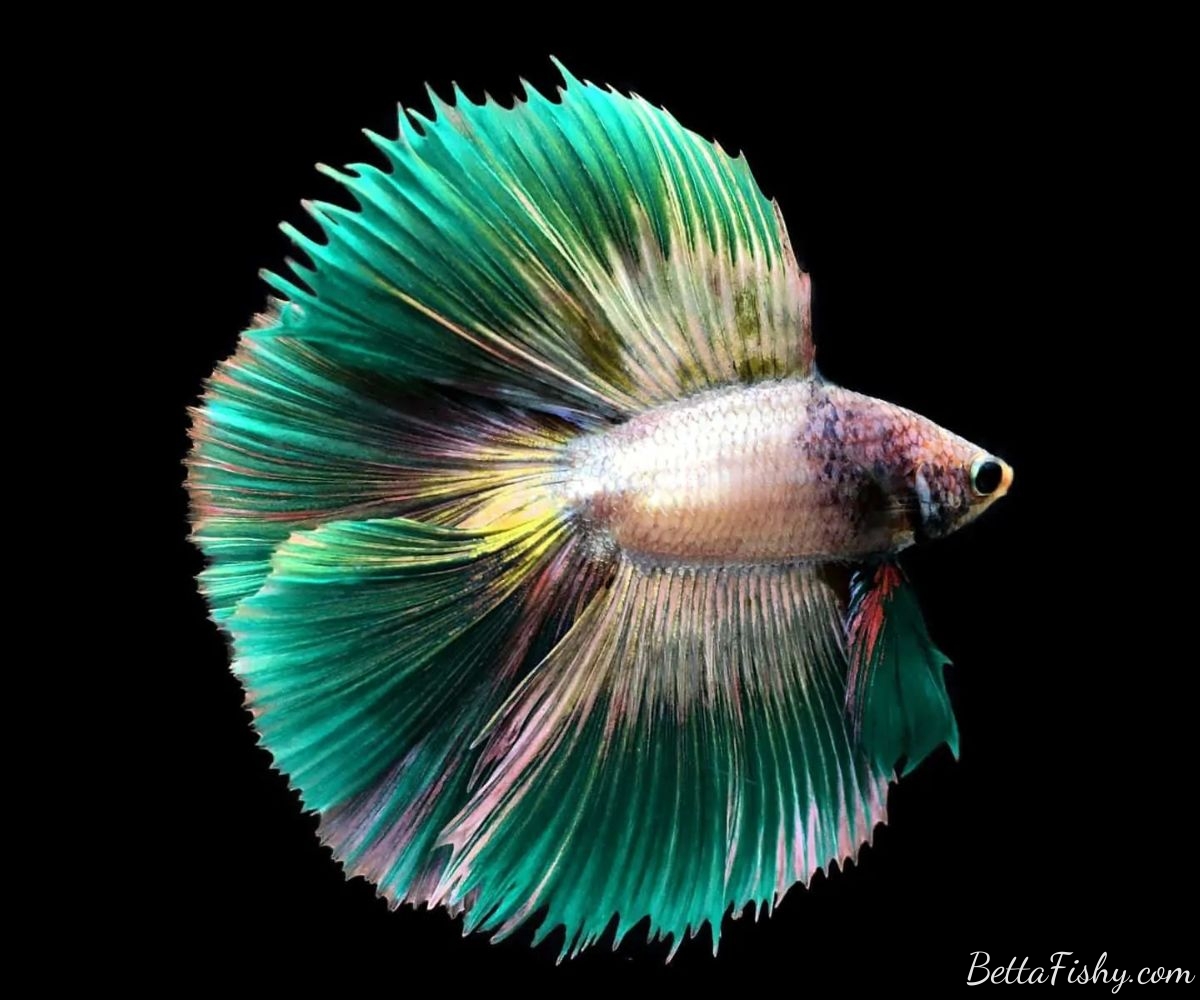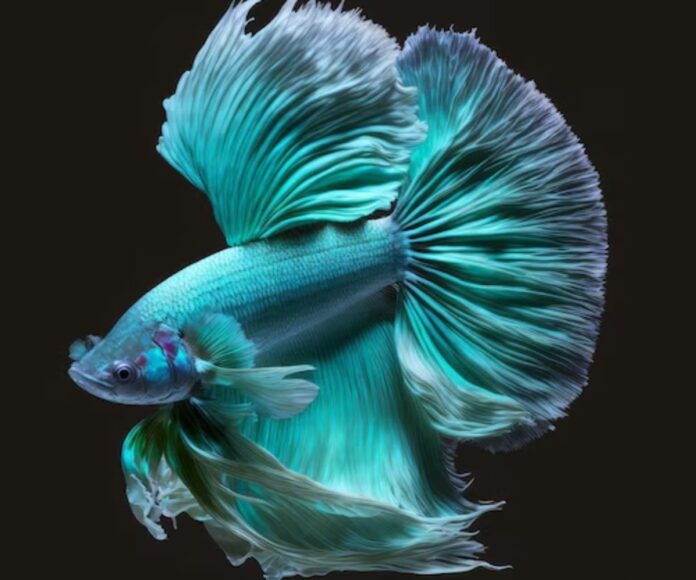Introduction
Betta fish are renowned for their wide array of stunning colors and flamboyant fins. From deep midnight blues to fiery reds, these small fish showcase an artist’s palette of beautiful hues. Yet among the rainbow, one color emerges as perhaps the rarest and most prized of all – green.
Green betta fish are a vivid jewel-toned variety, displaying metallic emerald, lime, or turquoise shades. Their scales have an iridescent sheen, refracting light to create dazzling living gems. Unlike the solid pigments that produce colors like red and orange, the green betta gets its verdant hues from a unique combination of layered tissue structures and light refraction. This makes a true green betta fish highly sought-after in the aquarium trade.
From their glistening scales to their flowing fins, green bettas embody the allure and mystique of one of nature’s rarest natural treasures. Come learn about the genetics, breeding, care, and beauty of these amazing green fish with BettaFishy.
What Exactly is a Green Betta Fish?

A green betta fish refers to the rare color variety of betta fish that displays a green hue. However, it’s important to note that most green bettas are not a true, solid green color. Rather, they exhibit a metallic, turquoise-green shade. Finding a betta fish with a pure, vivid green pigmentation is extremely uncommon.
The green coloration in these bettas is the result of special pigments as well as lighting conditions. Under white or blue light, the fish may appear more blue. However, under daylight or LED lighting, the green iridescence becomes very apparent. This makes green bettas stunning centerpiece fish when kept in optimized aquarium conditions . Their jewel-toned shimmer sets them apart from the more common red and blue betta varieties.
Why is it So Rare?
Green bettas are so rare for a couple main reasons. First, they require a very specific and rare combination of pigments and genetics to produce the green coloration. Unlike vibrant colors like red and blue that can be achieved through various genetic pairings, rich green pigmentation is much more elusive and uncommon in betta breeding. The pigments needed to make a betta fish green are extraordinarily rare.
Second, even when breeders are able to achieve bettas with the right genetic makeup, they face challenges getting the fish to fully exhibit the green coloration. The specific balances of pigments and lighting conditions have to be just right to bring out the green hues. Breeding solid or emerald green bettas is especially difficult. This makes green bettas considerably rarer than other colors that breeders can produce more readily like red, blue, orange, or black.
How Much Will It Cost?
Green betta fish are one of the rarest and most coveted types of betta among aquarium enthusiasts. This naturally leads to a higher price tag for both breeders and buyers. Expect to pay $40 or more for a single high-quality green betta fish.
The stunning emerald hues and rarity factor make green bettas much more expensive than the $5-10 price range of common betta varieties like red, blue, and cambodian. Some especially rare specimens with perfect form and vivid color can cost up to $100.
When shopping for a green betta, look for ethical, captive-bred fish from reputable sellers and breeders. Avoid big chain pet stores, as their betta stock may come from unpredictable sources with questionable practices. Sites like AquaBid allow buyers to connect directly with individual breeders specializing in green bettas of exceptional quality and lineage.
Origins and Natural Habitat of Green Bettas

Green bettas originate from the lush, tropical landscape of Southeast Asia. Their wild ancestors still inhabit parts of Thailand, Cambodia, Vietnam and Laos to this day, though green varieties remain extremely rare to find in nature.
In the wild, bettas live in stagnant pools, swamps, rice paddies and slow moving streams. Their natural habitat is densely vegetated with lush plants and submerged roots. This heavily planted environment provides security, shelter and dim lighting conditions which help bring out the stunning green and blue tones in their scaled coloring.
The natural conditions are very important to try to mimic in a home aquarium setting. Plenty of hiding spots, low lighting, a soft substrate and live plants can help a green betta feel secure and allow its most vibrant colors to shine through.
While domesticated green bettas are captive bred, understanding their origins in Southeast Asia and natural habitat preferences can help aquarists better care for these rare beauties.
The Fish Personality
The temperament of green bettas is similar to other betta varieties. They are typically aggressive and solitary fish that prefer living alone. Male green bettas in particular can be very aggressive towards other males, sometimes fighting to the death if housed together (cite). This aggression stems from their origins and mating displays in the wild
However, female green bettas tend to be less aggressive and can sometimes be kept in small community tanks with other peaceful fish (cite). They may still be territorial though, so plenty of hiding spots and plants are important in a community tank.
Despite their aggression towards their own kind, green bettas are highly intelligent fish capable of recognizing their owners. Their stunning jewel-toned colors likely evolved to attract mates and establish dominance hierarchies among competing males (cite). So while aggressive, green bettas exhibit fascinating behaviors connected to their evolutionary origins.
Green Betta Fish in Various Color Tones
Green bettas come in a wide variety of shades, ranging from pale minty green to deep emerald tones. Most exhibit an iridescent or metallic sheen to their scales, rather than a solid matte color. The exotic green pigments in their skin interact with light to produce stunning effects. Their coloration can look different depending on the lighting conditions.
Under bright LED aquarium lights or natural sunlight, the greens become especially vivid and jewel-like. You may see emerald, jade, teal, seafoam or lime-colored bettas. The lighter the background, the more their green hues will pop. In lower light, some varieties look almost turquoise or blue instead.
Both darker hunter green bettas and pale pastel greens exist. However, the majority are a medium green with strong iridescence. The play of light on their scales makes green bettas one of the most dazzling sights under proper aquatic lighting. Their coloration can shift from blue-green to rich emerald depending on how their unique pigments reflect the light.
Green Betta Fish With Different Tail Styles

When it comes to green bettas, certain tail types like the halfmoon are more commonly associated with exhibiting the rare green coloration. The halfmoon tail is characterized by having a 180 degree spread when flared, creating a striking semi-circular shape.
Other tail types that may display green coloration include the crowntail, which has distinctive extended rays on the fins, and the plakat, which has shorter fins. The plakat’s shorter fins are genetically connected to the green color, with extended finnage making it harder to achieve a pure green.
Green bettas often have ideal finnage and form for their tail type. Clean, symmetrical tails with no ragged edges are desirable. While long, flowing fins are beautiful, the shorter fins of green bettas allow their jewel tones to really shine.
In terms of overall features, green bettas will generally have smaller, compact bodies. Their scales have a metallic sheen under light. Bright green eyes also accompany their otherworldly coloration. The perfect symmetry and smooth fins are part of what makes green bettas so sought-after.
According to one source, “The halfmoon betta is considered the ideal tail type for showcasing green coloration, as the wide 180-degree spread allows maximum visibility of the rare hue”.
How to Keep Your Green Betta Fish Happy and Healthy
Green bettas require similar care to other betta varieties. The most important factors are housing, water conditions, diet, and tankmates. Some special considerations for green bettas:
Housing: Green bettas need at least a 5 gallon tank with a heater and filter. Make sure to provide plenty of live plants and hiding spots. The vibrant green coloring is best showcased under LED lighting. Avoid housing male green bettas together due to aggression and fighting.
Water: Maintain water between 78-82°F. Perform partial water changes of 25% weekly, or more often for smaller tanks. Use water conditioner to remove chlorine and heavy metals. The ideal pH range is 6.8-7.4.
Diet: Offer a high quality betta pellet as the staple diet. Supplement with live or frozen foods like bloodworms and brine shrimp 2-3 times per week for full nutrition. Avoid overfeeding.
Tankmates: Male green bettas cannot be housed with other males or colorful fish. Peaceful community options include snails, shrimp, tetras, rasboras, corydoras catfish. Introduce any tankmates slowly and watch for signs of aggression.
Breeding and genetics may result in shorter finnage in green bettas. Avoid sharp decor that could tear fins. Monitor water quality diligently and watch for signs of stress or disease.
Conclusion
In conclusion, the green betta fish is truly a special and captivating creature that deserves our admiration and attention. Its unique coloration, stunning iridescence, and graceful movements make it a standout addition to any aquarium.
Additionally, its hardy nature and relatively low maintenance requirements make it an ideal choice for both experienced fishkeepers and beginners alike. By choosing a green betta fish as a pet, you not only bring beauty into your home but also contribute to the preservation of this mesmerizing species. Let’s continue to appreciate and care for these remarkable creatures by providing them with suitable habitats and responsible care. Embrace the allure of the green betta fish today!


